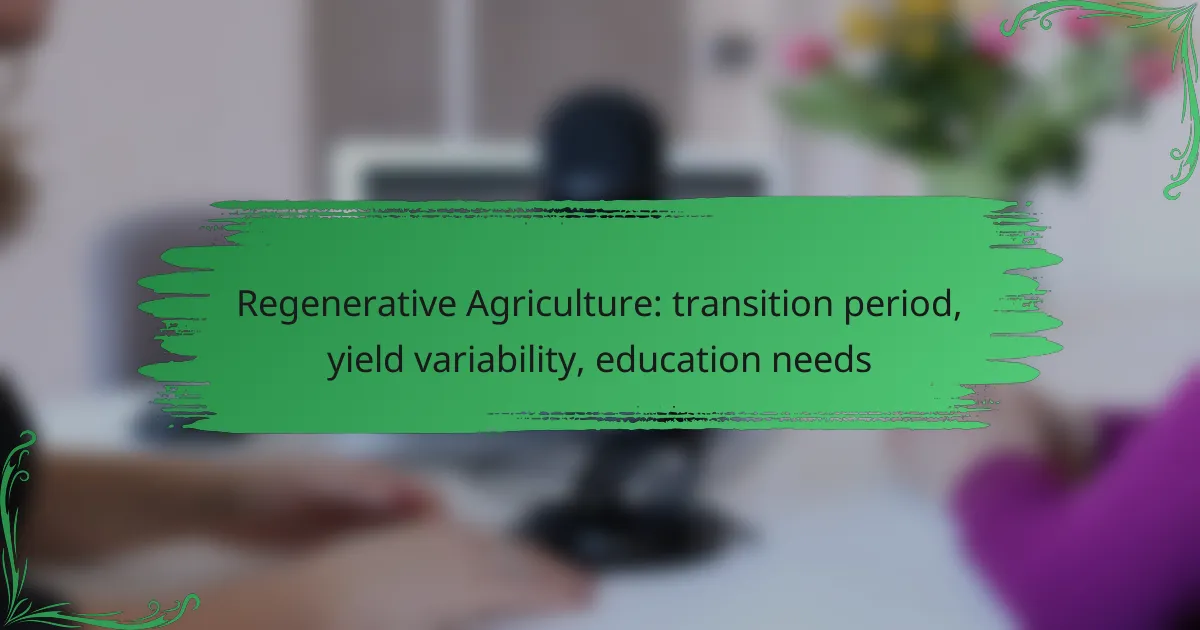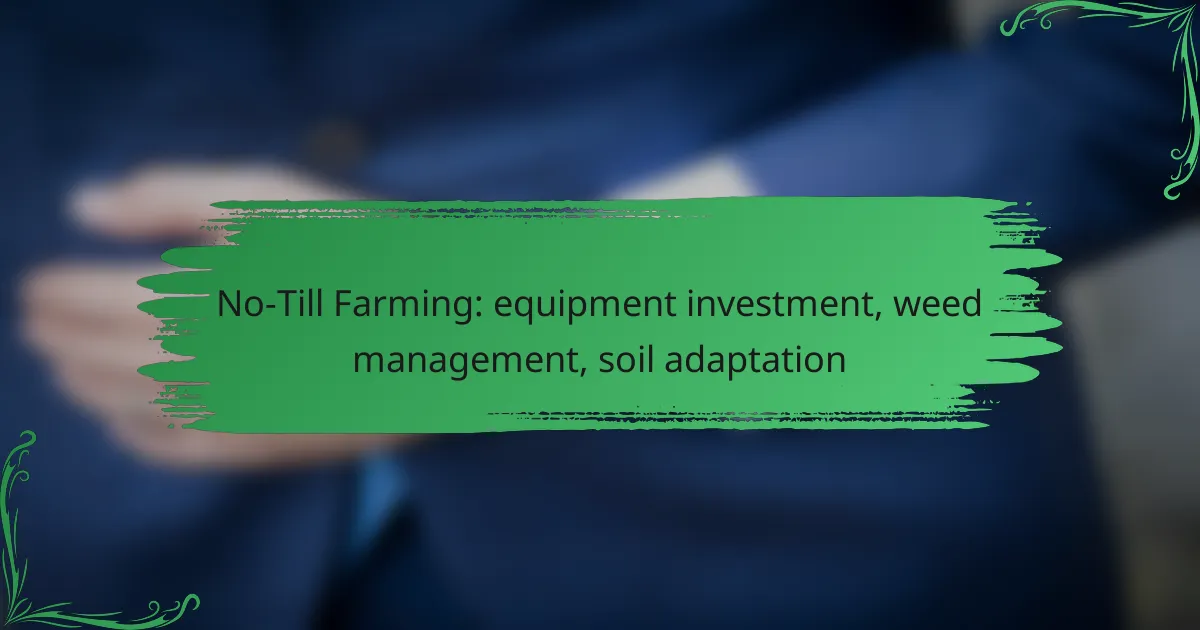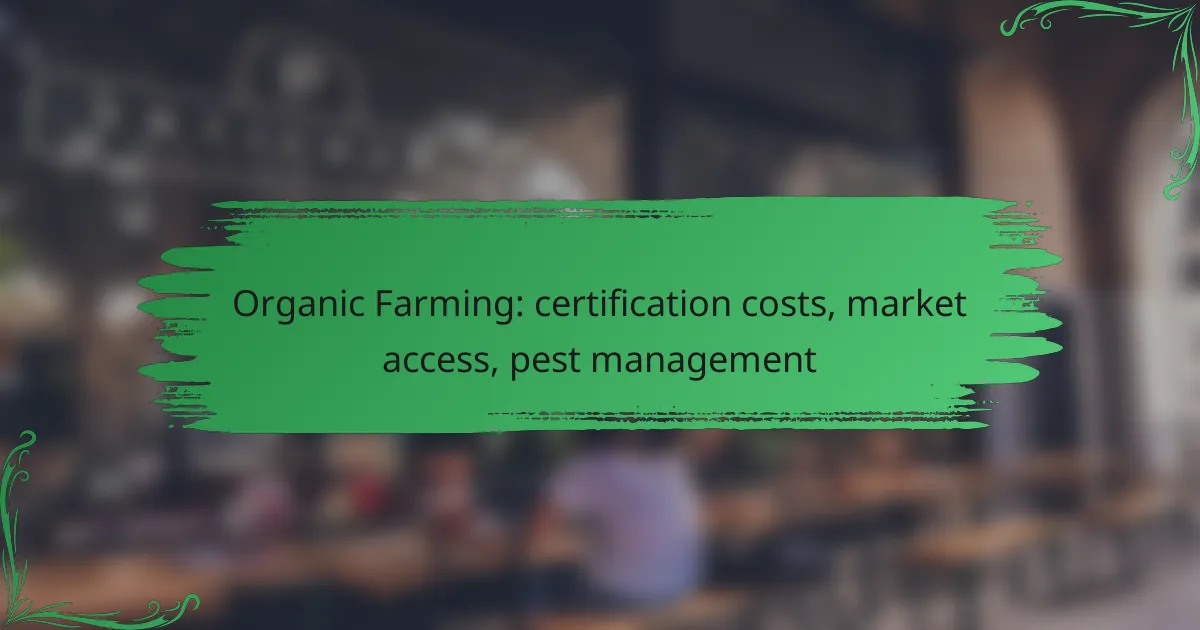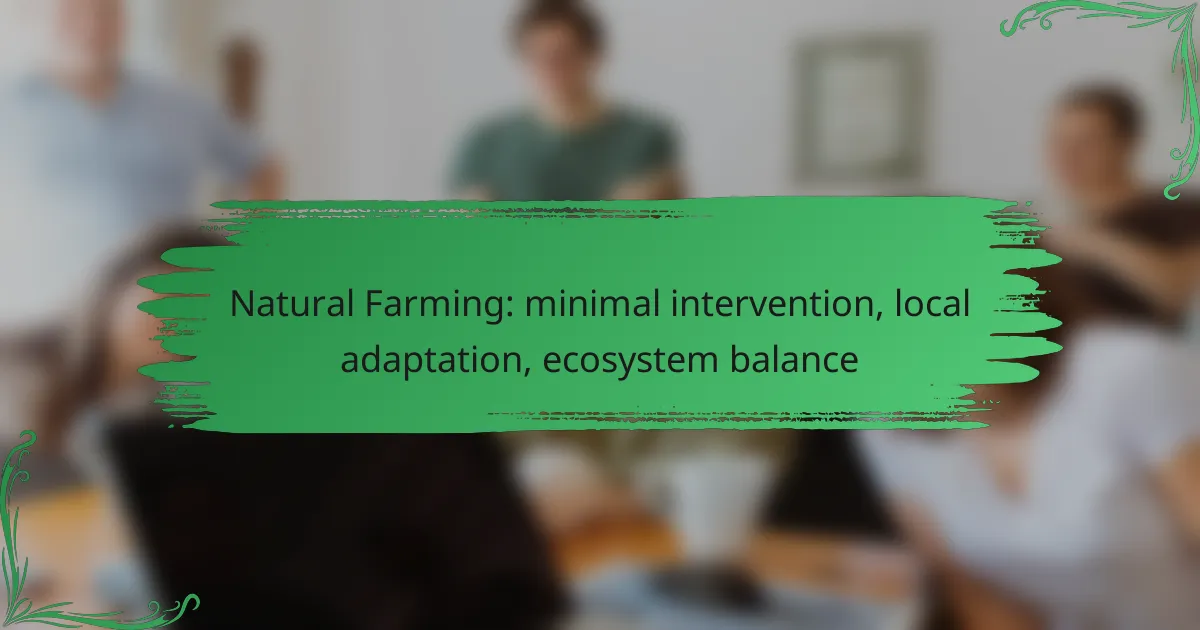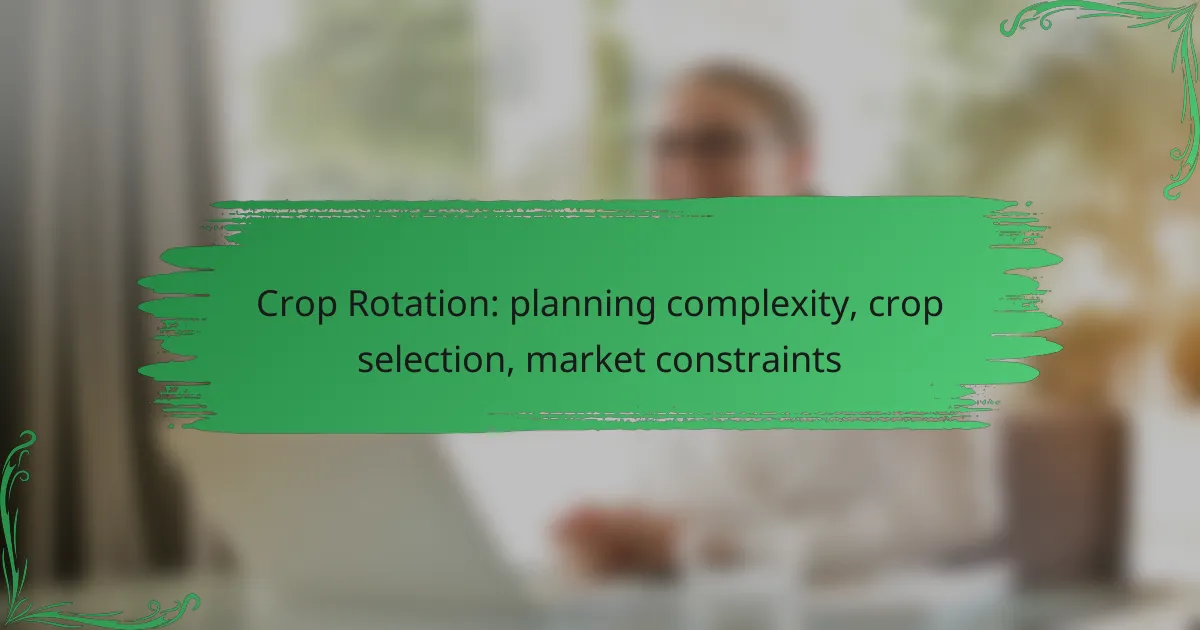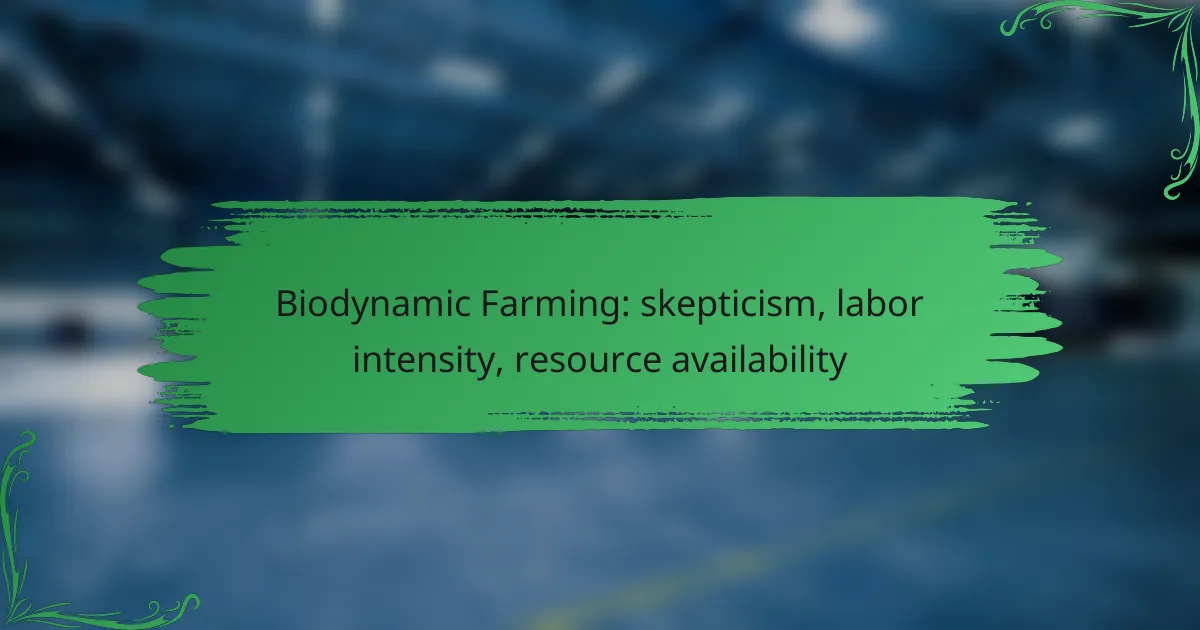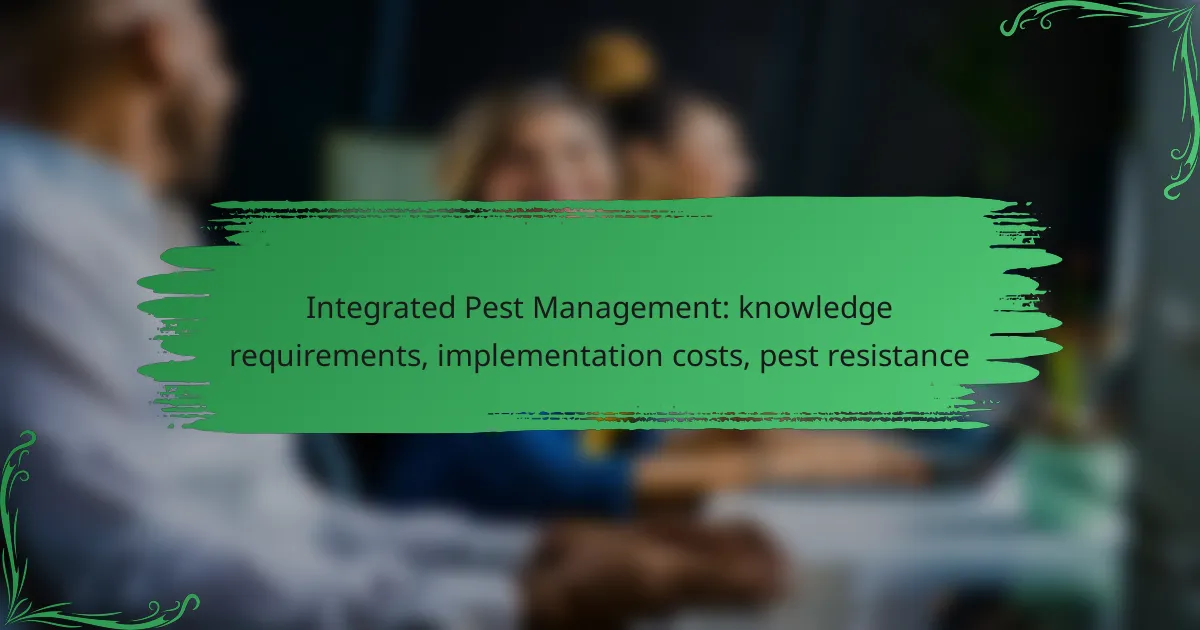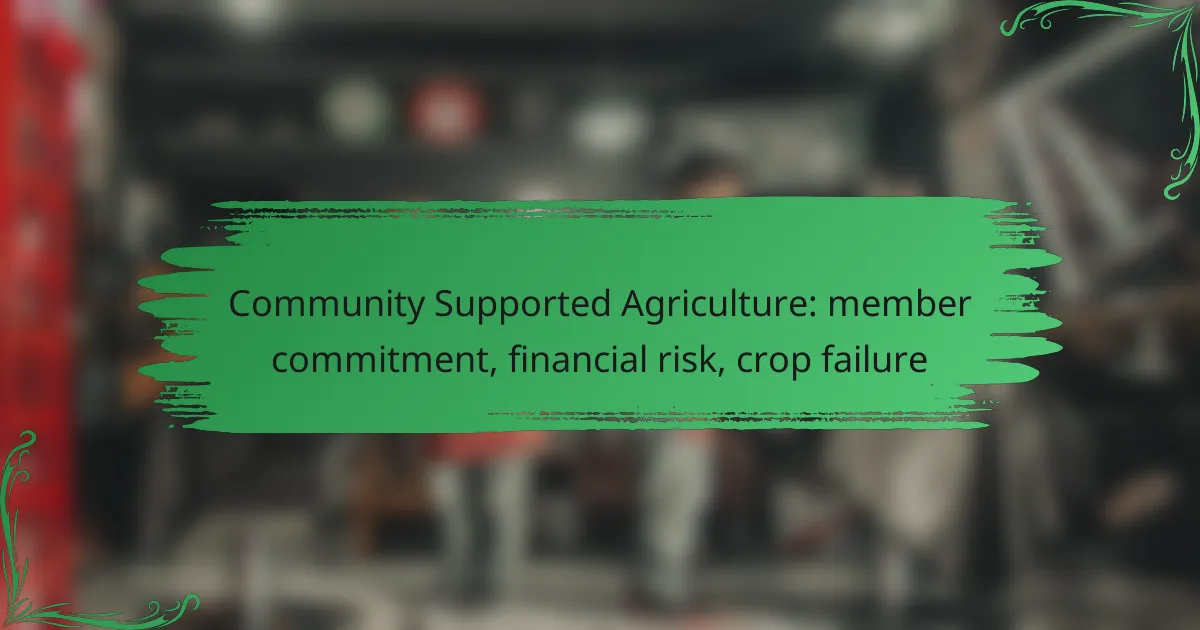What are the main challenges of sustainable farming in the United States?
The main challenges of sustainable farming in the United States include economic constraints, soil health issues, water resource management, pest and disease control, and market access. Each of these factors plays a critical role in the successful implementation of sustainable practices in agriculture.
Economic constraints
Economic constraints significantly impact sustainable farming by limiting farmers’ ability to invest in new technologies and practices. Many farmers operate on thin profit margins, which makes it difficult to allocate funds for sustainable initiatives that may not yield immediate returns.
Additionally, the initial costs of transitioning to sustainable methods, such as organic certification or renewable energy sources, can be prohibitive. Farmers must weigh the long-term benefits against short-term financial pressures, often leading to reluctance in adopting sustainable practices.
Soil health issues
Soil health is crucial for sustainable farming, yet many farmers face challenges such as soil degradation and nutrient depletion. Practices like monocropping and excessive tillage can lead to reduced soil fertility and increased erosion, making it difficult to maintain productive land.
To improve soil health, farmers should consider crop rotation, cover cropping, and reduced tillage. These methods can enhance soil structure, increase organic matter, and promote beneficial microbial activity, ultimately leading to more sustainable farming outcomes.
Water resource management
Effective water resource management is essential for sustainable farming, especially in regions prone to drought or water scarcity. Farmers must balance irrigation needs with conservation efforts to ensure long-term water availability.
Implementing practices such as drip irrigation, rainwater harvesting, and soil moisture monitoring can help optimize water use. Additionally, understanding local water regulations and rights is vital for sustainable water management in agriculture.
Pest and disease control
Pest and disease control presents a significant challenge in sustainable farming, as reliance on chemical pesticides can undermine ecological balance. Farmers must find effective ways to manage pests while minimizing environmental impact.
Integrated Pest Management (IPM) strategies, which combine biological control, habitat manipulation, and resistant crop varieties, can reduce reliance on chemicals. Regular monitoring and adopting preventive measures can also help mitigate pest and disease outbreaks.
Market access
Market access is a critical challenge for sustainable farmers, as they often face barriers in reaching consumers who value sustainable products. Limited distribution channels and competition from conventional agriculture can hinder their ability to sell sustainably produced goods.
Building relationships with local markets, participating in farmers’ markets, and utilizing online platforms can enhance market access. Additionally, educating consumers about the benefits of sustainable farming can help create demand for these products, supporting farmers in their transition to sustainable practices.
How can farmers overcome economic constraints in sustainable farming?
Farmers can overcome economic constraints in sustainable farming by leveraging financial support, adopting cost-effective practices, and collaborating with others in the agricultural community. These strategies can help reduce initial investments and ongoing costs while promoting environmentally friendly methods.
Access to grants and subsidies
Farmers can seek grants and subsidies from government programs and non-profit organizations that support sustainable agriculture. These financial aids can cover a significant portion of the costs associated with transitioning to eco-friendly practices, such as organic certification or renewable energy installations.
In the United States, for example, the USDA offers various programs that provide financial assistance for sustainable farming initiatives. Farmers should research local, state, and federal options to maximize their funding opportunities.
Implementing cost-effective practices
Cost-effective practices in sustainable farming include crop rotation, cover cropping, and integrated pest management. These methods not only enhance soil health and reduce chemical inputs but also can lead to long-term savings on fertilizers and pesticides.
Farmers should evaluate their current practices and identify areas where they can implement these techniques. For instance, using cover crops can improve soil fertility and reduce erosion, ultimately lowering the need for expensive soil amendments.
Participating in cooperatives
Joining a cooperative can provide farmers with shared resources, such as equipment and marketing channels, which can significantly reduce costs. Cooperatives allow farmers to pool their resources and negotiate better prices for supplies and services.
Farmers should consider forming or joining existing cooperatives focused on sustainable practices. This collaboration can enhance their economic viability while fostering a community committed to sustainable agriculture.
What role does technology play in sustainable farming?
Technology plays a crucial role in sustainable farming by enhancing efficiency, reducing waste, and optimizing resource use. Through various tools and innovations, farmers can implement practices that are both environmentally friendly and economically viable.
Precision agriculture tools
Precision agriculture tools utilize GPS and IoT technology to monitor and manage field variability in crops. These tools allow farmers to apply inputs such as water, fertilizers, and pesticides more accurately, reducing waste and environmental impact. For example, variable rate technology can adjust the amount of fertilizer applied based on soil nutrient levels, leading to better crop yields and lower costs.
Farmers should consider investing in soil sensors and drone technology, which can provide real-time data on crop health and soil conditions. This data-driven approach enables targeted interventions, improving both sustainability and profitability.
Data analytics for resource management
Data analytics in sustainable farming involves collecting and analyzing data to make informed decisions about resource use. By leveraging historical data and predictive analytics, farmers can optimize irrigation schedules, crop rotations, and pest management strategies. This not only conserves water and reduces chemical usage but also enhances crop resilience.
Farmers can utilize software platforms that integrate data from various sources, such as weather forecasts and market trends, to make proactive decisions. Regularly reviewing this data helps in identifying patterns and improving long-term sustainability practices.
Automation and robotics
Automation and robotics are transforming sustainable farming by increasing labor efficiency and reducing human error. Automated systems can handle tasks such as planting, harvesting, and monitoring crops, allowing farmers to focus on strategic management. For instance, robotic harvesters can pick fruits with minimal damage, ensuring higher quality produce.
Investing in automation can lead to significant labor cost savings and increased productivity. However, farmers should evaluate the initial investment against potential long-term gains, considering factors like crop type and farm size to determine the best fit for their operations.
What are the environmental impacts of sustainable farming practices?
Sustainable farming practices significantly reduce negative environmental impacts while promoting ecological balance. These methods enhance biodiversity, lower carbon emissions, and improve soil health, contributing to a more resilient agricultural system.
Improved biodiversity
Implementing sustainable farming practices fosters improved biodiversity by creating habitats for various species. Techniques such as crop rotation, intercropping, and organic farming encourage a diverse range of plants and animals, which can lead to more robust ecosystems.
Farmers can enhance biodiversity by incorporating native plants and reducing pesticide use. This not only supports wildlife but also helps in pest control, reducing the need for chemical interventions.
Reduced carbon footprint
Sustainable farming practices contribute to a reduced carbon footprint by minimizing greenhouse gas emissions. Methods like no-till farming, cover cropping, and agroforestry sequester carbon in the soil, effectively lowering atmospheric CO2 levels.
Farmers can further decrease their carbon emissions by optimizing energy use and utilizing renewable energy sources. Transitioning to electric machinery and implementing energy-efficient practices can significantly lower overall emissions.
Enhanced soil fertility
Enhanced soil fertility is a key benefit of sustainable farming practices, which focus on maintaining soil health through organic matter and nutrient management. Techniques such as composting, green manures, and reduced tillage improve soil structure and nutrient availability.
Farmers should regularly test soil to monitor nutrient levels and adjust their practices accordingly. This proactive approach ensures that soil remains fertile, supporting healthy crop yields while minimizing reliance on synthetic fertilizers.
How do regulations affect sustainable farming practices?
Regulations play a crucial role in shaping sustainable farming practices by setting standards that farmers must adhere to for environmental protection. These laws can promote eco-friendly methods but may also impose challenges that farmers need to navigate effectively.
Compliance with environmental laws
Compliance with environmental laws requires farmers to understand and implement practices that minimize harm to ecosystems. Regulations often address issues such as pesticide use, water management, and soil conservation, mandating specific actions to maintain environmental quality.
Farmers must stay informed about local, national, and international regulations that affect their operations. For instance, the EU’s Common Agricultural Policy encourages sustainable practices through financial incentives, while the U.S. has the Environmental Protection Agency (EPA) enforcing standards that impact farming methods.
To ensure compliance, farmers can develop a checklist of applicable laws, regularly review updates, and consider consulting with legal experts or agricultural extension services. This proactive approach can help avoid penalties and promote sustainable practices effectively.

